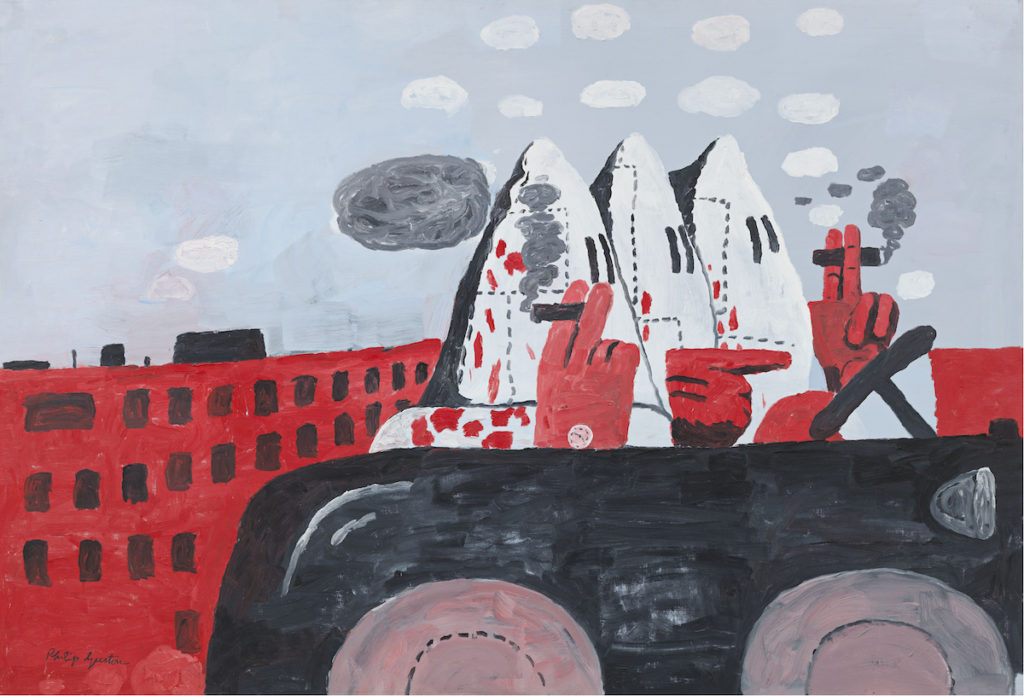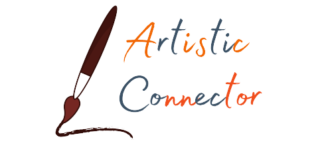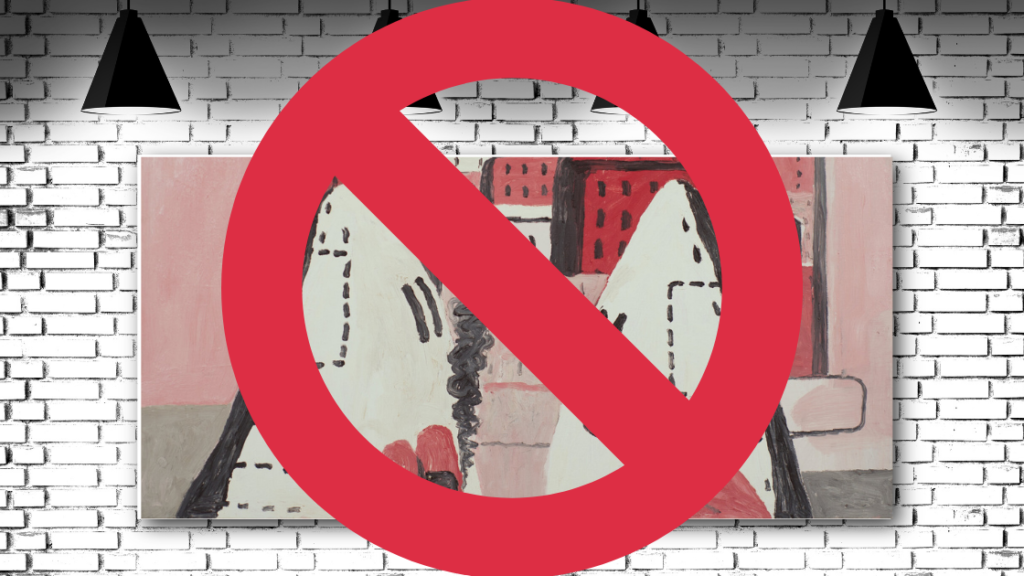Controversy
The MFA Boston, the MFA Houston, the National Gallery of Art, and the Tate Modern all recently announced that they would delay the upcoming exhibit Philip Guston Now until 2024. The obvious absurdity of postponing an exhibit called anything Now notwithstanding, the decision has caused quite a stir. The four museums gave the following statement about their decision: “We are postponing the exhibition until a time at which we think that the powerful message of social and racial justice that is at the center of Philip Guston’s work can be more clearly interpreted. We feel it is necessary to reframe our programming and, in this case, step back, and bring in additional perspectives and voices to shape how we present Guston’s work to our public.”
The response to this statement has been overwhelmingly negative. New York Times art critic Jason Farago said on Twitter, “It is bleak beyond words, not to say cowardly, for these museums to postpone their Guston retrospective for FOUR YEARS1.” There are questions about whether the donors got involved, and if the decision was financial instead of artistic. Sebastian Smee of the Washington Post also criticized the decision, saying, “It is a statement that sounds as if it comes from the mouths of people who hate art.2“
The museums have since released another statement announcing that the exhibit would now be displayed in 2022.
Philip Guston
To understand this controversy, we have discuss Philip Guston and his art. Born Philip Goldstein in 1913, Guston was one of the founders of the New York School movement and an influential artist until his death in 1980. He started with figurative painting, became a popular abstract painter, and then, to the shock and dismay of many, returned to representational painting in 1967. During this second figurative period, Guston painted many pieces featuring Klansmen. This wasn’t a new trend in his art; the Klu Klux Klan and other symbols of racism were prevalent in his first representational period, as well. In 1932, Guston co-created a mural in support of the Scottsboro Boys that depicted a Klansman whipping a Black man. The most important detail about this piece is what happened to it: “Los Angeles police then raided the club [it was being stored in], discovered the painting and destroyed it, firing bullets into the Black figures’ eyes and genitals.3“
Racism and racial injustice were themes in Guston’s work for his entire career. He ultimately felt abstract art couldn’t sufficiently portray his reaction to the infuriating and frustrating forces he saw out in the world, so he returned to representational art, calling American abstract art “‘a lie’ and ‘a sham’.4” His peers mostly didn’t understand this move, as art was getting ever more abstract each year and, at least in the elite New York salons, there was no longer any space for figurative art.
When Guston returned to representational painting, the Klansman returned to his art in a new and different way. Klansmen are depicted smoking, watching tv, and generally living life. This “banality of evil 5” is why there is concern about the planned exhibit, as well as part of the controversy about its delay. The other major aspect about these paintings that many people are blatantly ignoring as they discuss this controversy is that Guston created these Klansmen paintings as self-portraits: “They are self-portraits … I perceive myself as being behind the hood … The idea of evil fascinated me … I almost tried to imagine that I was living with the Klan6.” He wrestled with his own ingrained racism, and he dealt with guilt over rejecting his Jewish heritage when he changed his name from Goldstein to Guston. “He presented himself as a sad sack beset by bad habits and bad thoughts7.”

Art Censorship
“Censorship” is a common refrain among many people who object to the delay of the exhibit. Many in the art world are very triggered by censorship, which explains why the response to this delay was so quick and so visceral. The culture wars of the 80s and 90s are long enough ago that many people in the art world don’t remember them. To summarize: The National Endowment of the Arts (NEA) partly funded two exhibits that were deemed offensive by conservative members of Congress. There was an effort to defund the NEA that technically failed, but the NEA took a real hit in its budget. Censorship is viewed as a conservative thing, whether it’s Jesse Helms and the NEA or Rudy Giuliani and the Brooklyn Museum. The Parents Music Resource Center, which successfully implemented parental advisory stickers on music, was founded by Tipper Gore, a Democrat, but there is an inherent conservatism in their mission to protect children from foul language.
Because of the conservatism of censorship, the reaction against the decision to delay the Guston exhibit has also become political. The critical issue with censorship is that it is “defined by a small number exerting a privileged view over a large number of people8.” There is an implicit unfairness in censorship that many people react to, independent of the subject matter. So while an examination of Guston and his motives is important, most people who object to the delay see the core problem as simply a case of censorship. There are valid reasons to question the exhibit (for example, the lack of people of color involved), but those should have been considered before any decision to delay. Walking back now won’t work because it’ll stir up a controversy regardless.
Weaknesses of the Philip Guston Exhibit
The current rhetoric about censorship and the vitriol directed at the museums involved mask the fact that there are some problems with the Guston show as it was planned. The primary issue is that everyone involved in creating the exhibit is white. The curators did not want the Klansmen portraits to be the star of the show; they planned a retrospective that included pieces from all three of Guston’s major periods, and the Klansmen were intended to merely be a part of the larger whole.
However, regardless of the intent for the exhibit, there should be at least one person of color on every board, on every team, and in any other group whenever possible to ensure that different viewpoints are heard. It’s important to ensure that no group of curators is excluded, especially when the exhibit they’re planning includes one of the more triggering and racist images in American history. The racial makeup of this curatorial team is absolutely a failing, and if it had been prevented, that one difference might have changed the course of this entire story.
Kaywin Feldman, director of the National Gallery, defended the decision to delay the show by pointing out that there needs to be a Black curator on the team and “that the museum needed to prepare its largely Black security force for the content of the exhibition9.” 11 Her point is valid; it’s not just the visitors that should be prepared for content that may be upsetting. Additionally, as Darren Walker of the Ford Foundation and trustee of the National Gallery says, “in the past few months the context in the U.S. has fundamentally, profoundly changed on issues of incendiary and toxic racist imagery in art, regardless of the virtue or intention of the artist who created it10.” 6
Criticism of the Delay Decision
The statement from the museums says that they need to wait until the pieces can be “more clearly interpreted.” Several sources that I’ve cited here have ripped into that; as Aindrea Emelife of the Guardian snarkily put it, “If 2024 is the year when social and racial issues can be discussed more freely, can I time travel there11?” Her point is a good one. The notion that we would be more equipped to discuss racial issues in four years is a bit fanciful. And the implicit argument is that if in four years, we will be in roughly the same place as we are now, why not open the exhibit as originally planned?
Interpreting Philip Guston
There is also some confusion about what, exactly, needs to be “more clearly interpreted.” Guston’s relationship to race, racism, and the Klan is surely complex, but it is not ambiguous. He was actively and thoroughly anti-racist, and used the Klansmen in his art to show the wickedness in himself and all of us. These themes are knotty and they require a deft hand to work through all the layers of meaning, but there is so much source material available to help anyone through it. And as Jason Farago says, “Guston’s Klan paintings indeed require interpretation, education and public outreach — but that is precisely the job of museums at all times12.” A major component in the backlash is the perception that these museums are running away from their core function: to educate the public.
Censorship?
I think it’s questionable whether this actually counts as censorship, but regardless, the museums have created a larger controversy by delaying the show than they probably would have experienced if they’d gone ahead with it. They have “intensified the culture wars they were undoubtedly hoping to de-escalate13.” People will form opinions about the artist, the exhibit, and the museums based on what they learn about it from other sources, and the museums have voluntarily pulled themselves out of that conversation. They’ve lost the ability to contribute to this conversation and shape the narrative about the exhibit and the subject matter it portrays. This is what happens with censorship too. People see the art anyway, but now, there’s no cohesive narrative.
The Culture Wars in the 80s was very good for Robert Mapplethorpe, one of the artists whose exhibit was targeted by Jesse Helms and other Congresspeople for being obscene. His career took off and his photographs became much more valuable. When you make a public statement, you throw the issue into the public sphere and then walk away from it, but you also expose people to the issue for the first time. It’s unfortunate, because museums have an obligation to educate, and this is has become a missed opportunity.
Point of Art
There are many different reasons art exists, and the purpose of this article is not to delve into the philosophy of art. However, one of the reasons that people feel so strongly about art is that it provokes, it challenges, and it elevates. Art can create discomfort or pain in the viewer. This has generally been considered a good thing by the art community, so seeing museums, art institutions, and people in the art world now backing away from this is especially disheartening. No one is surprised when politicians don’t get art, but art people should understand the purpose and power behind the images and embrace the discomfort. This backlash is as much a feeling of betrayal by the art world as it is a response to the decision to delay the exhibit.
The exhibit catalog and other materials have already been published. Reading them, it becomes clear that the curators “asked of themselves: ‘How do we acknowledge that the images of the Klan are painful to many? Can we locate his allyship also in his act of self-scrutiny when he considered how he was implicated in white supremacy? Why did he draw parallels between police and Klansmen? Was Guston too casual with his imagery14?'” The catalog delves into Guston’s personal history with racism and picks apart the thorny issues at hand. We can assume that the interpretive material in the exhibit would follow the same vein. This is not a tone-deaf exhibit.
How to Proceed
There has been a lot of rhetoric about this decision to delay the Guston exhibit. Many soapboxes have been stood upon. The museums are listening, shortening the delay to two years instead of four. Hopefully, when the exhibit finally opens in 2022, there will be people of color involved and the museums will better prepare their staffs for the content of the show. And maybe, we will have arrived at a point in time when Guston’s work can be more clearly interpreted, but I doubt it. The best outcome that I can see coming from this experience is that in the future, museums will choose to confront and tackle thorny issues instead of running away from them.
How do you feel about the decision to delay? Share in the comments!
- “The Art World Is Furious Over the Postponement of a National Gallery Show Featuring Images of KKK,” Washingtonian (blog), September 29, 2020, https://www.washingtonian.com/2020/09/29/the-national-gallerys-philip-guston-retrospective-has-been-postponed-the-decision-has-rocked-the-art-world/.
- Sebastian Smee, “Perspective | In Postponing Guston Exhibition, the National Gallery and Three Other Museums Have Made a Terrible Mistake,” Washington Post, accessed November 19, 2020, https://www.washingtonpost.com/entertainment/museums/national-gallery-postponement-of-philip-guston-show-was-a-mistake/2020/09/27/9b3c6082-003f-11eb-8d05-9beaaa91c71f_story.html.
- Sebastian Smee, “Perspective | In Postponing Guston Exhibition, the National Gallery and Three Other Museums Have Made a Terrible Mistake,” Washington Post, accessed November 19, 2020, https://www.washingtonpost.com/entertainment/museums/national-gallery-postponement-of-philip-guston-show-was-a-mistake/2020/09/27/9b3c6082-003f-11eb-8d05-9beaaa91c71f_story.html.
- “Philip Guston,” in Wikipedia, https://en.wikipedia.org/w/index.php?title=Philip_Guston&oldid=989150375.
- “Philip Guston,” in Wikipedia, https://en.wikipedia.org/w/index.php?title=Philip_Guston&oldid=989150375.
- ibid
- Peter Schjeldahl, “Philip Guston and the Boundaries of Art Culture,” The New Yorker, accessed November 19, 2020, https://www.newyorker.com/magazine/2020/10/19/philip-guston-and-the-boundaries-of-art-culture.
- Fitzpatrick, James, Norman Rosenthal, and Jake Chapman. “Art Censorship.” RSA Journal Vol. 149 (2002): 53-56. Royal Society for the Encouragement of Arts, Manufactures and Commerce, 2002.
- Julia Jacobs, “After Backlash, Philip Guston Retrospective to Open in 2022,” The New York Times, October 28, 2020, sec. Arts, https://www.nytimes.com/2020/10/28/arts/design/philip-guston-retrospective-date.html.
- Jason Farago, “The Philip Guston Show Should Be Reinstated,” The New York Times, September 30, 2020, sec. Arts, https://www.nytimes.com/2020/09/30/arts/design/philip-guston-shows-open-letter.html.
- Aindrea Emelife, “Philip Guston’s KKK Images Force Us to Stare Evil in the Face – We Need Art like This | Aindrea Emelife,” The Guardian, September 28, 2020, sec. Art and design, https://www.theguardian.com/artanddesign/2020/sep/28/philip-guston-kkk-images-force-us-to-stare-evil-in-the-face-we-need-art-like-this.
- Jason Farago, “The Philip Guston Show Should Be Reinstated,” The New York Times, September 30, 2020, sec. Arts, https://www.nytimes.com/2020/09/30/arts/design/philip-guston-shows-open-letter.html.
- “The Gray Market: Why the Delay of ‘Philip Guston Now’ Will Backfire on the Entire Culture Sector (and Other Insights),” artnet News, September 28, 2020, https://news.artnet.com/opinion/philip-guston-now-postponement-1911180.
- Aindrea Emelife, “Philip Guston’s KKK Images Force Us to Stare Evil in the Face – We Need Art like This | Aindrea Emelife,” The Guardian, September 28, 2020, sec. Art and design, https://www.theguardian.com/artanddesign/2020/sep/28/philip-guston-kkk-images-force-us-to-stare-evil-in-the-face-we-need-art-like-this.


Pingback: Artists in Covid-19: Do We Need Something Like the Federal Art Project? | Artistic Connector